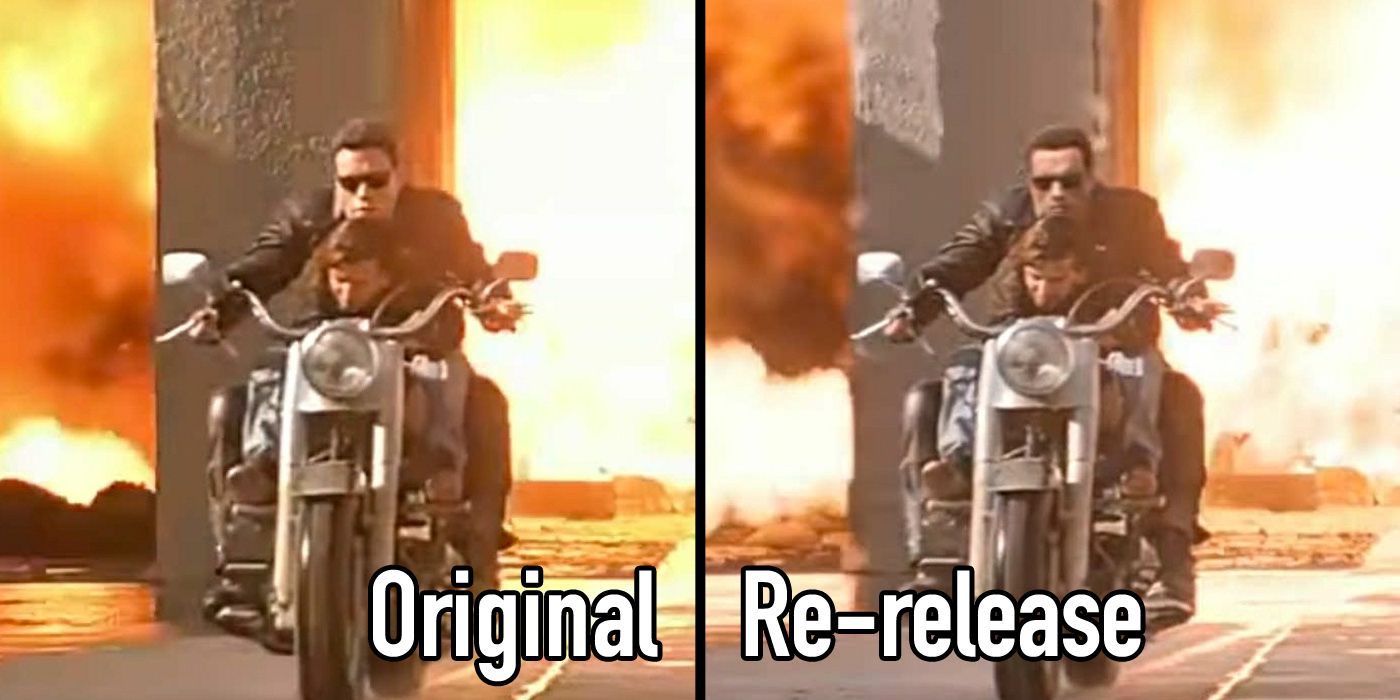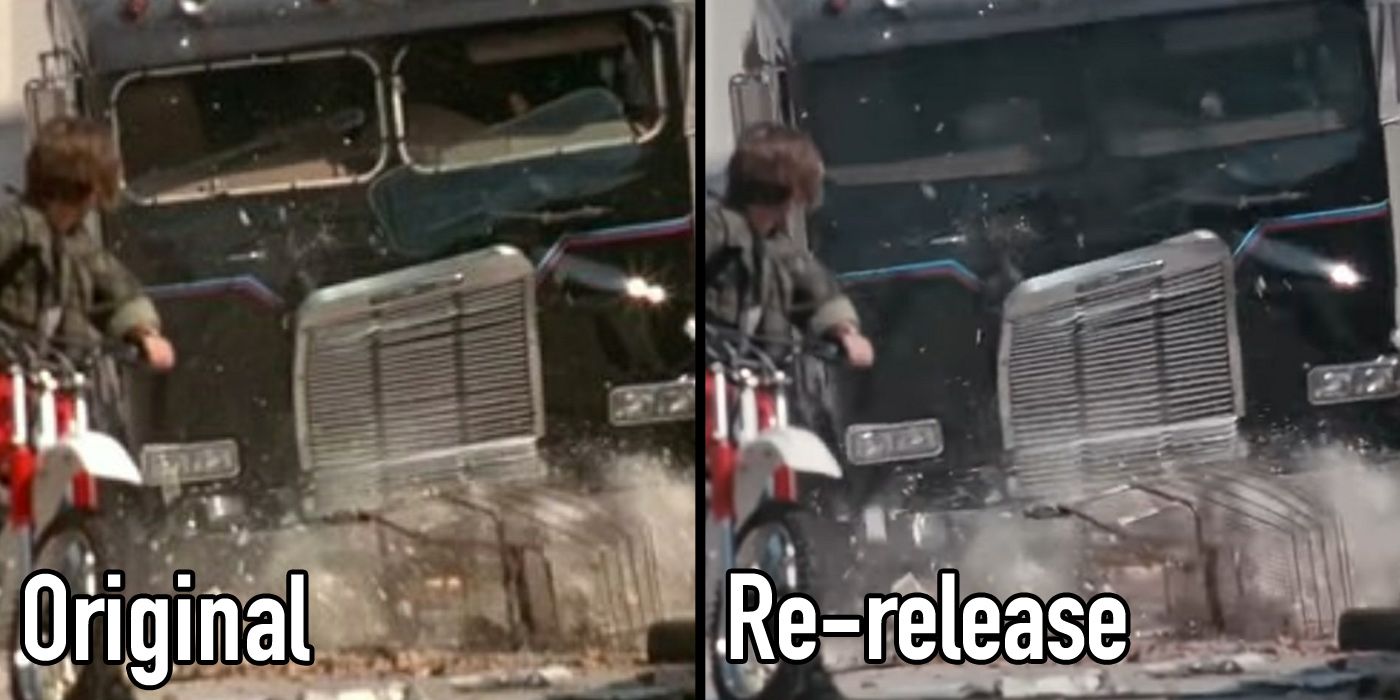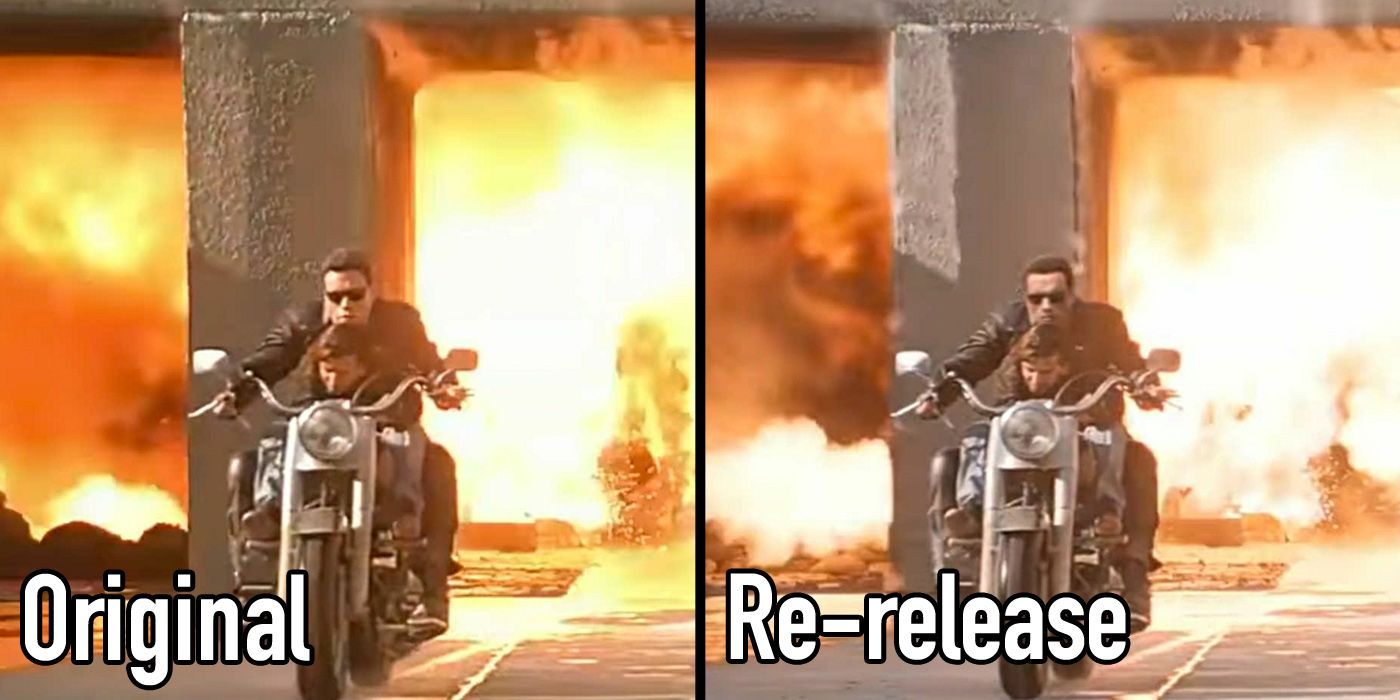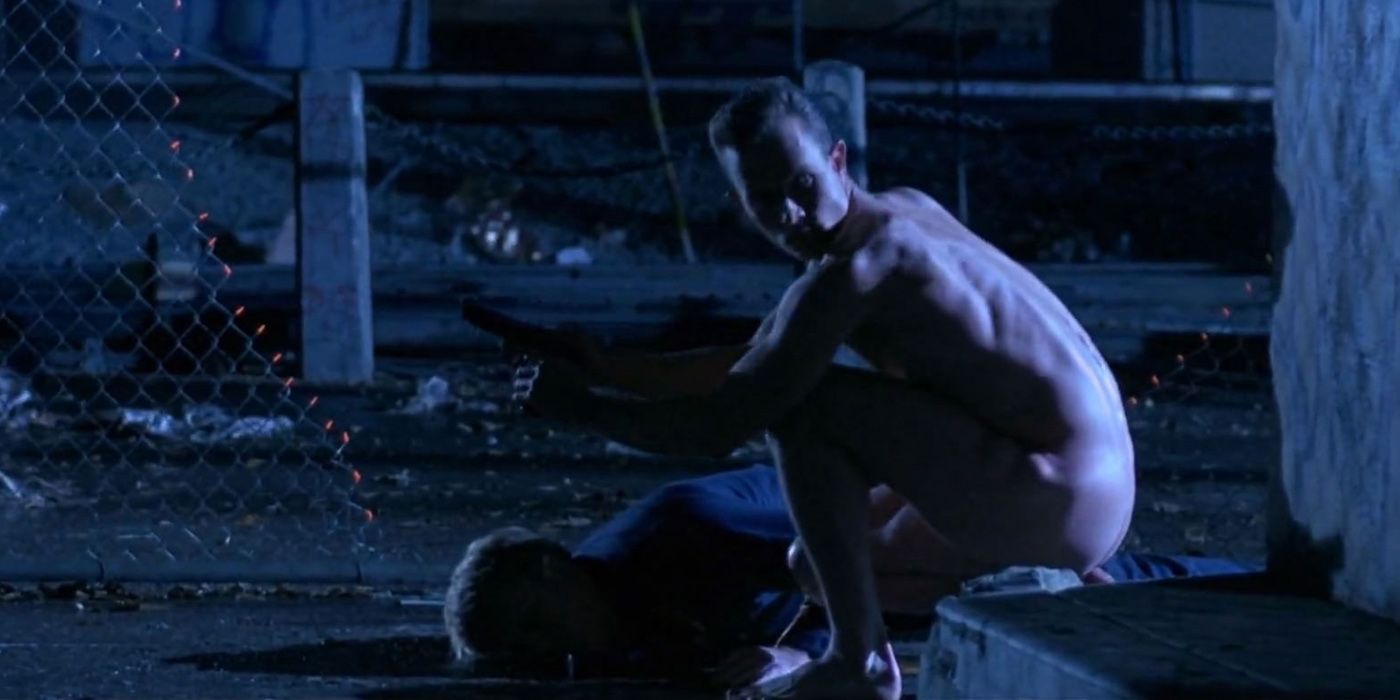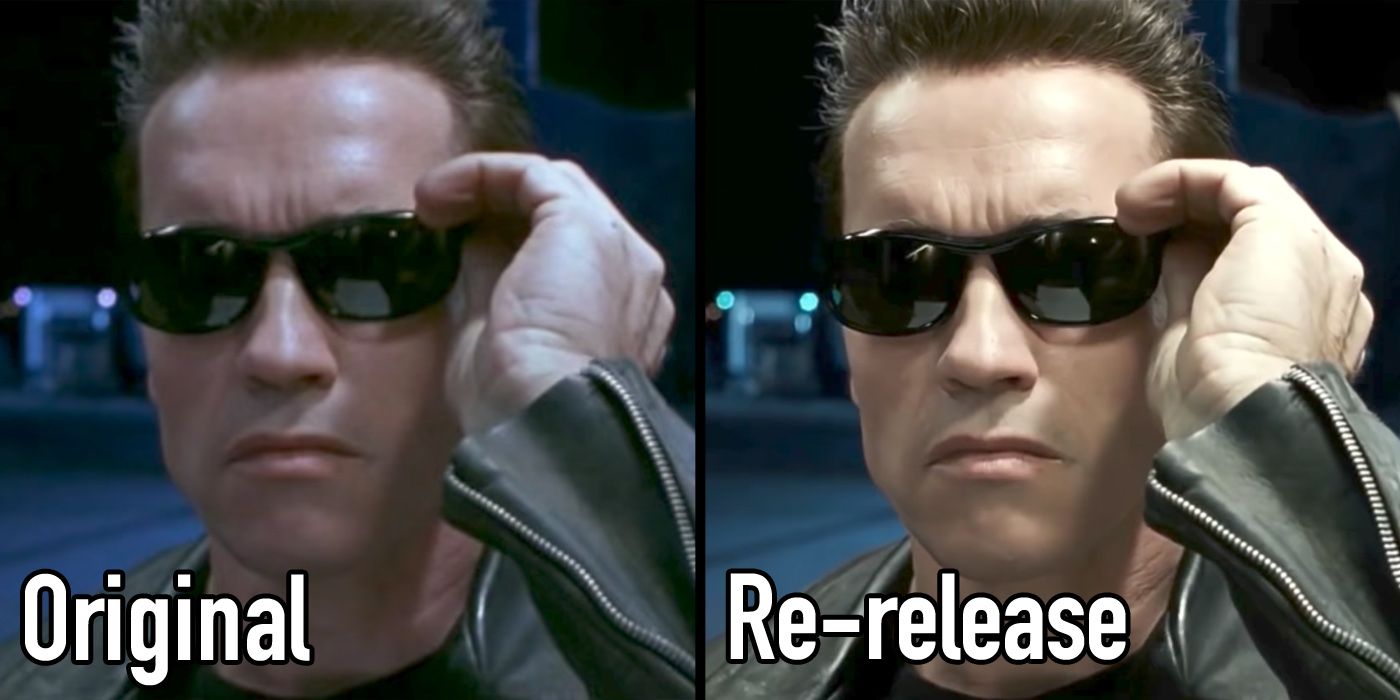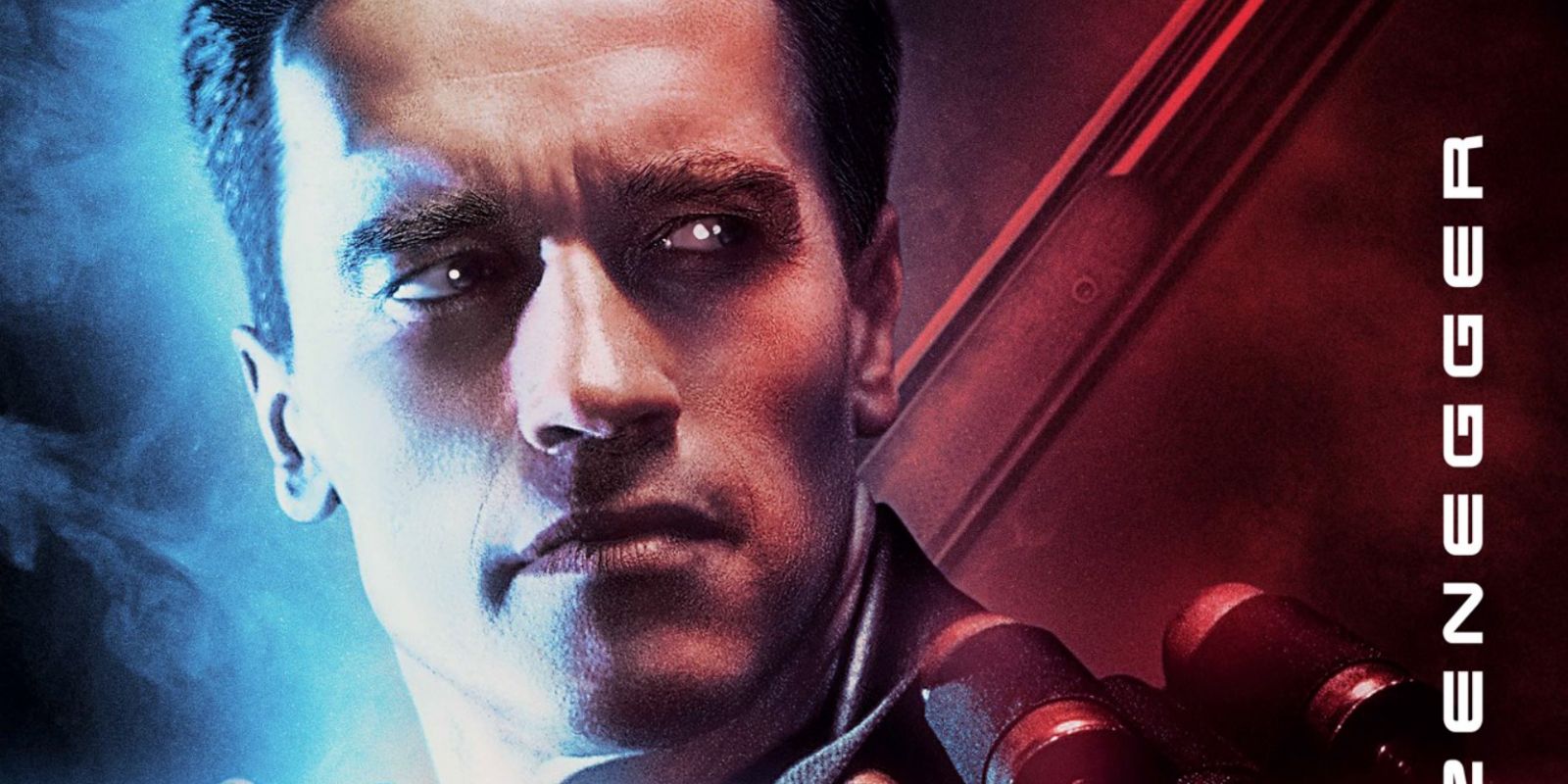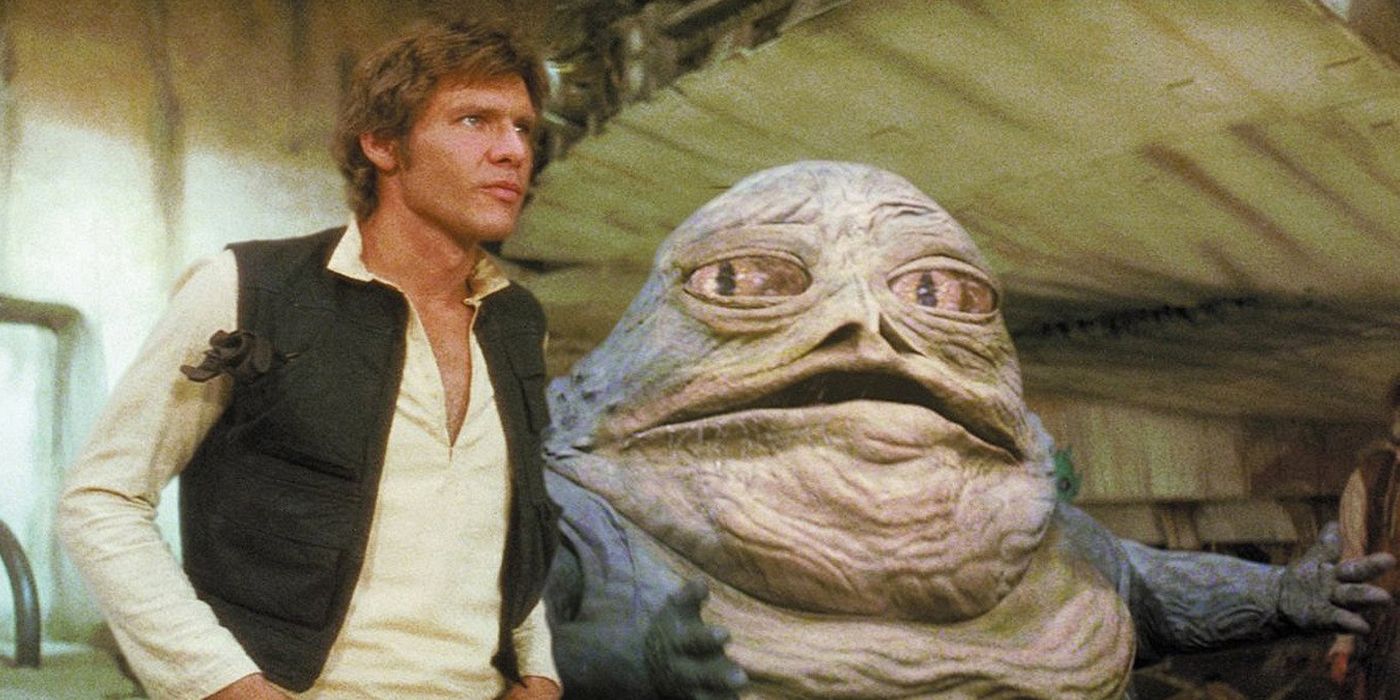Terminator 2: Judgement Day is back in cinemas this month for a James Cameron-approved 3D re-release. Although if you're hoping to see the action classic exactly as it was in 1991 (just with some ineffective stereoscopy) you're not going to quite get what you're expecting; the director's made a couple of alterations using the latest in computer graphics.
This isn't the first time Cameron's gone back and tinkered with his films. He's a big proponent of adding in previously cut scenes for Director's Cuts, giving the treatment to Aliens, The Abyss, Titanic, Avatar (twice in that case) and, yes, Judgement Day. It's hard to say any massively improve the base film - they're more fan-pleasing moments for those wanting a different sort of rewatch - but all are worth checking out.
However, the changes we're talking about with T2 3D are less expanding or altering the story and more "fixing" what's already in the frame. He's actually done something similar before with Titanic, albeit incredibly subtle; for the 3D release and associated Blu-Ray to mark the centenary of the real ship's sinking in 2012, he corrected the night sky so the stars were accurate to the morning of April 15, 1912.
Of course, Judgement Day is still as great as it's always been - a juggernaut blend of emotive sci-fi storytelling and intense action whose effects haven't worn in the proceeding 26 years - and it would take an incredible amount of tinkering to hurt even 1/215th of the film's brilliance (yes, that is a reference). What we're talking are cosmetic changes and essentially redactions of some of Terminator 2's IMDb goofs listings, rather than anything seismic. But they are unannounced alterations all the same, worthy of discussion in and of themselves, but also in reference to the idea of changing art and film in particular.
We've reached out to the distributors to inquire about any other changes made to the film and will update this article accordingly.
The Truck Glass
Cameron's made two prominent CGI changes that ostensibly fix mistakes that will have become glaring to the many who have made rewatching the film a habit. Both of these come in the truck chase immediately after the T-1000 has made its first attempt to kill future revolutionary leader John Connor, pursuing the mini-bike-riding ten-year-old into a storm drain in a truck while the T-800 provides support on a Harley.
The first is addressing a continuity problem. In previous versions of the sequence, when Robert Patrick drove the truck off a bridge and into the drain the windshields smashed out on impact; as you'd expect, sure, but the film later makes a point of the glass still being in the frames, with the liquid-metal machine nonchalantly knocking it off later in the chase.
This apparently always irked Cameron so he's adjusted it so they remain in, removing the flying windshields. Speaking to Entertainment Tonight, he discussed and justified the decision (this will be very important later):
"George Lucas I think he constantly had new ideas and wanted to punch up those films [Star Wars]. I felt I've changed as an artist, why would I want to second guess myself and what I was thinking back then in '91. I actually think the movie stands. I didn't feel a compelling need to change anything editing-wise, other than to just get it to the highest possible standard of color and picture and everything else. We didn't change it, except for one thing."
He later claims the removal doesn't count as it isn't an editing change and that he would have done it himself in 1991 had the technology been available. Although why that statement is important isn't just the justification, but that the director implies it's the only change he made: it isn't.
The Stunt Double
As awesome as the truck chase is on a visceral level (it's pretty much perfect), one consistent technical criticism of it has been the painfully obvious stunt doubles; it's very clearly a fully-grown man riding the scooter instead of Edward Furlong, while the slow-motion spectacle shots of the T-800 flying into the drain and later escaping the exploding truck were so obviously not Schwarzenegger. This was always present in the film, but as picture quality of releases increased it became painfully obvious.
Yet in the 4K version, it's all good - Arnie looks like Arnie. And that's because it's been updated: as you can clearly see in the image above, we have a CGI mask to cover the stunt double's face. It certainly happens in the two most obvious cases mentioned (and from watching the film we think a couple of other times) and is effective insofar as it's basically unnoticeable. Also on this point, the wires on the Harley as it flies into the drain have been removed.
Robert Patrick's Balls Are Covered
Another gaffe that became increasingly obvious the more you rewatched Judgement Day is Robert Patrick's balls - when the T-1000 is cocking the dead cop's gun in its arrival scene, you can rather plainly see the actor's scrotum between his legs (not included in the image above out of decency). In the 3D version, this split-second glimpse is covered by a bit of computer-added concrete over the offending area.
It's another little in-camera mistake being adjusted and technically removes a slight moment of male nudity (so, despite being inoffensive, has some reason for being covered), but is still a case of Cameron hiding a change.
The Lighter Image and Altered Coloring
This one isn't as big as the CGI changes but is still worthy of discussion. Terminator 2 has always had a very distinct blue/orange coloring to highlight the coldness of the world and the heat of the robot-destroying fire, and while the 3D version doesn't get rid of that, it tones it down and introduces a crisper coloring.
Part of this is that the image has been made bright to account for the substantial light-loss caused by darkened 3D glasses, and further it would always occur when you're restoring a nearly three-decade old film (as Cameron said in the above interview). However, as you can see in all the images, it has a marked impact, suggesting a drive to add a bit more polish and modernity overall. And with that in mind, it's time to address whether these changes are any good.
The Issue With These New Changes
Before going into ethics, let's get that extra dimension out of the way. This doesn't count as a change to the movie per se as it's essentially a new media addition. Also, it's utterly worthless. Yes, the 3D is as good as you'd expect from Cameron - even when it's post-conversion he predicates the best - but, bar the future-set opening and Sarah Connor's nuclear vision, it's barely noticeable and thus wholly ineffective. The problem is that as the film is so dominated by backlit sets and shot with tight focus, the added depth of field that makes the rare good 3D movie pop just can't be achieved. Terminator 2 is a movie made for 2D and thus winds up being one of the most pointless 3D movies out there.
And, so, onto the base film that will likely get its own 4K home video release. As we've seen, there are at least three active changes and another in part the product of the remastering. Now, compared to the like of the Star Wars special editions, in which pretty much every frame had some "enhancement" (much to the general ire of fans), that's not too big a deal. But they are changes all the same and raise the question of what movie you're actually watching: it's Terminator 2 (2017), which is almost Terminator 2 (1991) but not quite.
Of course, the 2017 version is a quantifiable improvement. Sure, for some the stunt driver was a fun thing to spot and so its correction removes a bit of cheese, although given that's ironic enjoyment it's hardly an argument. But that's not even the debate; if 2017 supersedes 1991, which was at the time the most expensive film ever made and netted over $500 million at the worldwide box office ($900 million in today's money), then we're essentially getting rid of a piece of film history and moving into George Lucas territory.
The George Lucas Problem
The debate comes down to a question of whether the original is available. This is why Star Wars has become the negative poster child for updates - from 1997 to 2011, George Lucas not only repeatedly tinkered with the original trilogy, he also ensured that any previous iterations were made unavailable (with only a cheap, 4:3 cropped version as a glorified bonus feature to placate fans in 2006). Even now, there is no (legal) way to watch the theatrical version of Episodes IV-VI (the former without that numbering). On a side note, the same is true of many other movies - The Matrix (which had the computer world hued green on home video to line up with the sequels) and The Lion King (which had some animation in song sequences changed) chief among them - but people are generally more accepting there.
In this arena, all of Cameron's previous director's cuts are accepted curios because they never got rid of the original. Indeed, most extended versions come bundled with the theatrical cut, which is typically viewed as the "definitive" take. However, this new version of Terminator 2 (and Titanic's star map) are different; they're now the prime versions of the film and essentially overwrite the movies you've been watching over-and-over for decades. You're not going to get the non-CGI Arnie in future releases. It's a real shame by itself that becomes something a bit more complicated when you consider that Cameron lied about the extent of the tampering.
It's understandable to a degree. When going back to an old movie there's always going to be some wear from the simple ravages of time a director will balk at. Indeed, if you watch the unaltered version of Star Wars, you'll be greeted not only with Han shooting first and no CGI Jabba, but also a bunch of wonky compositing effects, blue screen bleed over, mirrored shots, uneven matte paintings and more. They're minor in the grand scheme of things and for 1977 were downright revolutionary, but creak when viewed by modern eyes. And so using tech not available at the time to correct similar elements of T2 seems like a rational solution.
He lied presumably to avoid highlighting how much was actually altered, hoping that the CGI was subtle enough to go unnoticed. However, it has been noticed and, while welcome, it's a very small step from little touch-ups correcting flubs to scene reinsertion and complete tonal shifts. At the end of the day, these Terminator 2 CGI moments are sensible, minor alterations, but as we saw with Lucas it's a slippery slope until you're presenting a different film and suppressing what people originally loved.
More: Watch Terminator 2 Covered In Grand Theft Auto 5
Terminator 2: Judgement Day 3D is in cinemas from August 25th.

